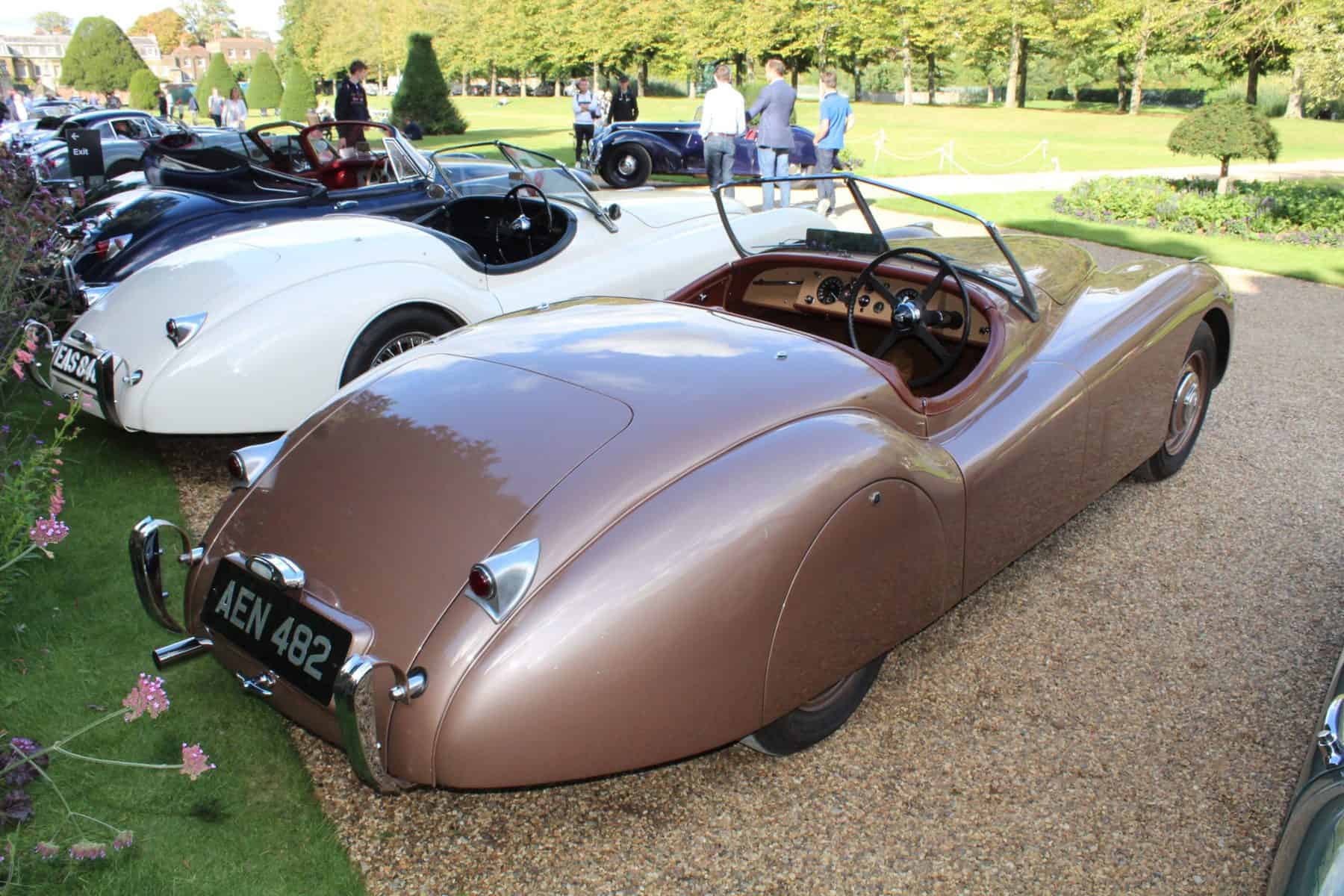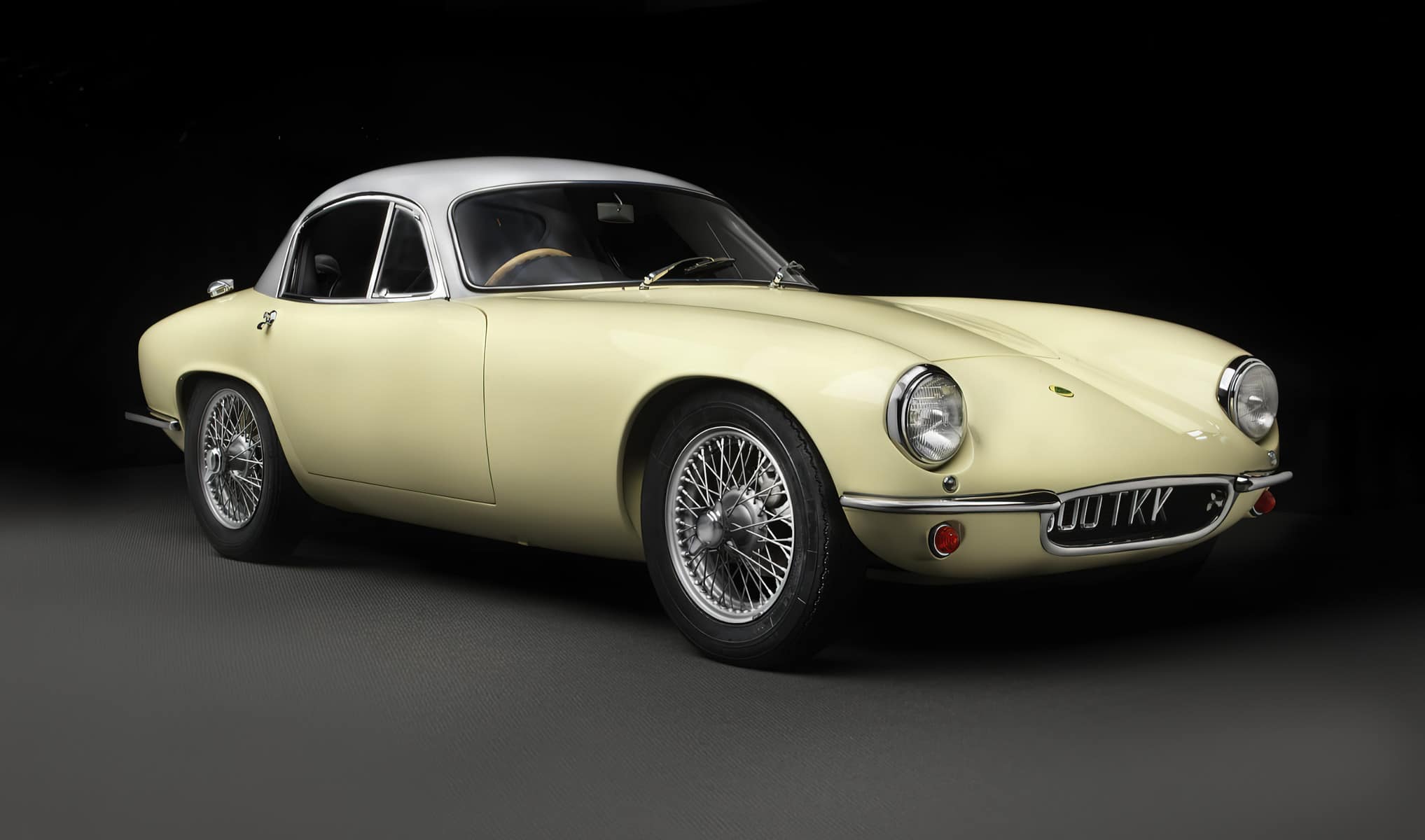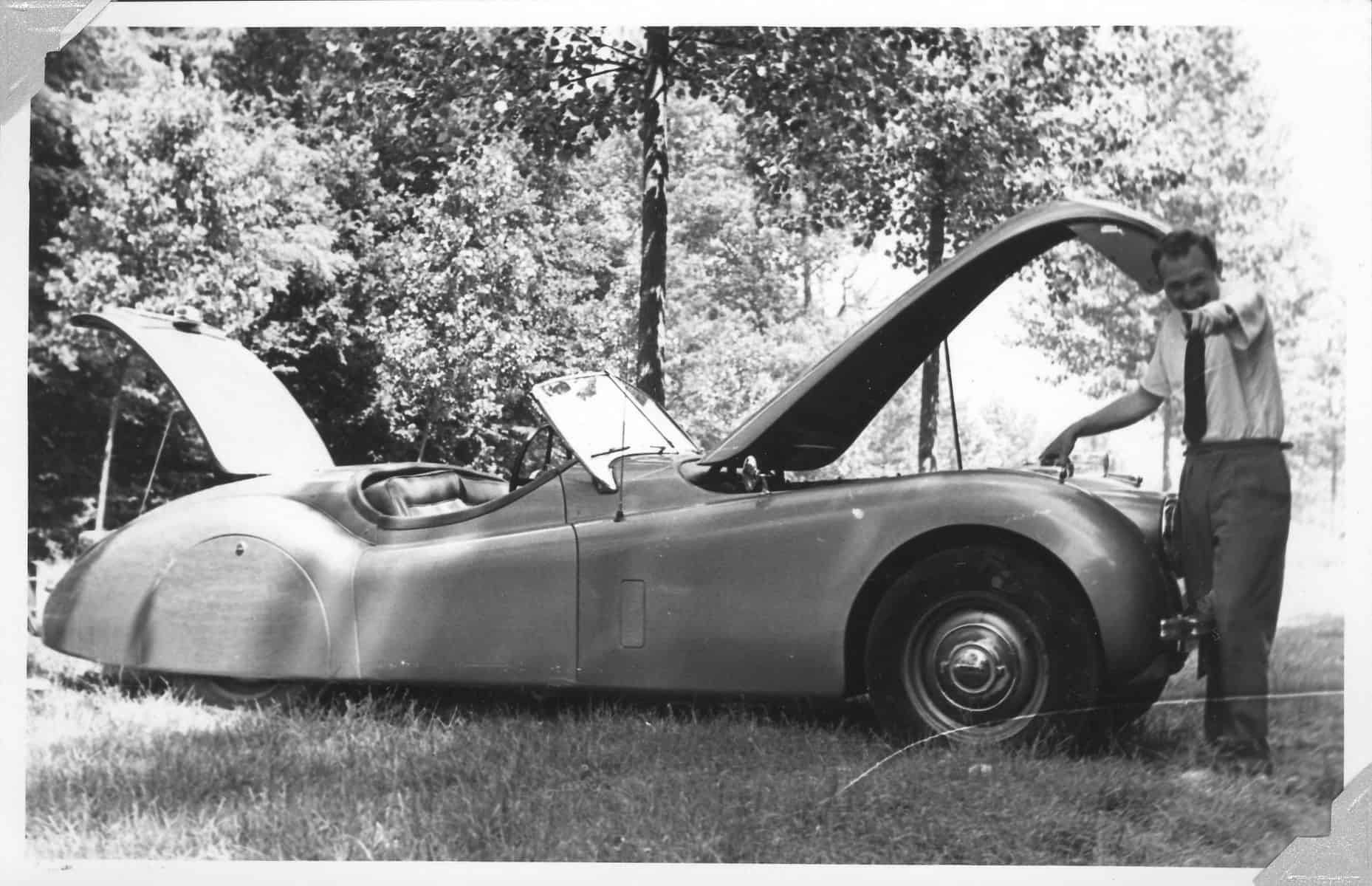Blueblood
The fascinating tale of a 1951 Jaguar XK120
BY: PETER STEVENS
For me one of the greatest pleasures of being asked to judge at a concours event is the chance to talk with enthusiastic owners of interesting cars. The Hampton Court Concours of Elegance in early September last year, with the current strict distancing rules, was unlike any other I have been to.
Everyone behaved very sensibly and took pleasure from seeing new cars and old friends in the beautiful gardens at the back of historic Hampton Court Palace, about fifteen miles west of central London.
Confronted with what seemed to be an endless line of Jaguar E-Types, I wondered how to find the best in class? There were a small number of 120s, 140s, and a 150. Among the 120s was a gold-painted version that looked particularly charming, lightly patinated, with no sign of over-restoration. On the driver’s seat there was a slim folder containing some photocopied images of the car in its early life. The name of the first owner, to whom the photographs were attributed, intrigued me: Peter Kirwan-Taylor.
Peter Kirwan-Taylor was the designer of the first Lotus Elite, introduced in 1957. In addition to Kirwan-Taylor’s contribution to the design of the Elite, he was involved in the first Elan, Lotus 18 and 23, he was a close confident of Colin Chapman, and he was significantly involved in improving Lotus’ profits and the company’s eventual flotation on the Stock Exchange.

The Jaguar was given to Kirwan-Taylor early in 1951 when he was a student at Trinity College, Cambridge. Born on January 8, 1930, into a wealthy family, he was the son of Lt.-Col. William John Kirwan-Taylor and society beauty Helene Charlotte de Berquely Richards. At some point in 1951 he appears to have had a fairly large accident in the Jaguar while competing in a rally. The car was repaired, but apparently the result was not satisfactory and it was then fitted with a new body early in 1952; confusingly it was given a new body number that was never assigned to any new XK120. Says the current owner, Chris Lackner, “It does explain why this car now has the foot well vents, which were not introduced until late 1951. They are clearly visible in pictures of it taken in 1953. Apparently the Taylor family had connections with Sir William Lyons, which may possibly account for how the car came to be fitted with a heater and HMV radio at the Jaguar factory in 1952.”
Around 1952 or ’53, Kirwan-Taylor moved to Paris, taking the XK120 with him, and it is believed he used it in France for most of the 1950s. During this time he met and married his wife, Julia Ogden, an art student studying in Paris. In 1953, the couple took an extended tour of France and Spain in the gold Jaguar and it was during this trip that Kirwan-Taylor took the photographs that appear is this article. One of the more fascinating images is of the Jaguar outside the walls of Castell de Peñíscola, Castellón, a few miles north of Valencia. This castle was built by the Knights Templar between 1294 and 1307 and was the location for much of the filming of Anthony Mann’s epic movie El Cid. One of Kirwan-Taylor’s more interesting photographs shows the car after being flown across the English Channel in a Bristol Freighter, a short-lived and expensive luxury of those times.
In 1959, Kirwan-Taylor designed the little Citroën Bijou based on the 2CV for Citroën’s importers. The car was not a success. After that, Kirwan-Taylor’s professional career took a different turn – he qualified as an accountant and became an immensely successful banker. In 1960, he joined the merchant bank Philip Hill Higginson Erlangers, which in due course became Hill Samuel; from 1967 to 1970 he was executive vice president in New York. He moved on to become a director of English Property Corporation responsible for its North American interests, and to work for a series of natural resources, real estate, and venture capital businesses in New York and Canada. In 1996, he moved to Hong Kong as managing director of the Asian arm of a Canadian property group, although its ambitious project plans were slowed by the Asian financial crisis in 1998. He died in London in 2014.
It is possible that Peter Kirwan-Taylor kept the Jaguar until 1961 when it passed through a couple of owners, one of whom re-painted it red. This was Rodney Steel of Orpington in Kent who kept the car for thirty years. Steel was a science and technology journalist who worked at the Natural History Museum as well as the Central Office of Information, London. He authored a book called Bentley, the Crewe Years, and wrote other books on sharks, crocodiles, and even monitor lizards! Obviously a real “petrol-head,” Steel also owned an E-Type, a 1950s Lagonda 3.0-liter drophead, and an Aston Martin DB2/4. The Jaguar was still red in 1997 when it was acquired by Sir Christopher John Benson, who had the engine rebuilt, disc brakes fitted at the front, and a re-trim of the interior to exactly the same specification as in 1952.
The car was sold once more, in 2007, to Rebecca Price; the following year it passed to her boyfriend, David Acon, and was shipped to the island of Jersey where it was registered J 2609. After five more owners – the fifth of whom had it re-painted in the original gold in around 2015 – it was bought by the current owner, opera singer Christopher Lackner, who was bewitched by the car but determined to return it to its 1952 specification. Southern Classics in Twickenham, a suburb of London, replaced the chrome wire wheels, made new rear wheel arch spats and re-fitted drum front brakes in 2017; Brian Stevens in Hampshire rebuilt the engine in 2018. “Fettling is ongoing and rewarding,” reports the owner, who plans to rebuild the gearbox and fit a newly overhauled 3.27 high-ratio rear axle for more relaxed cruising.
And not surprisingly, Chris Lackner won the Jaguar class at Hampton Court; I say “not surprisingly” but, judging by Chris’s face at the presentation, he was very surprised!









